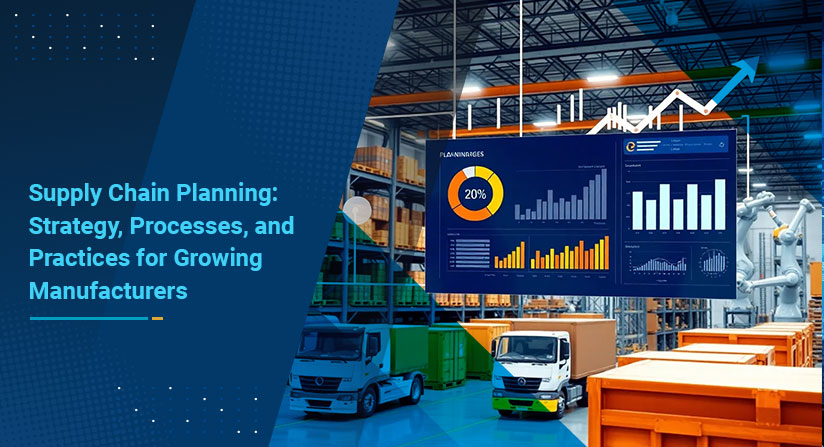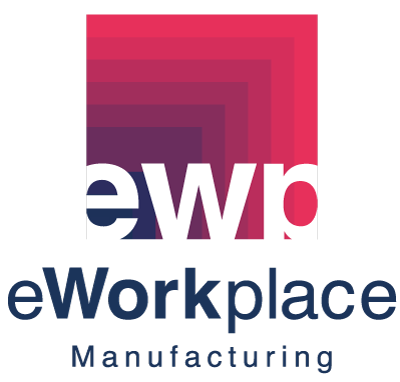In today’s fast-paced global market, manufacturers face mounting pressure to deliver products faster, more cost-effectively, and with higher efficiency, without compromising quality or compliance. At the heart of this balancing act lies an often-underestimated discipline: supply chain planning.
Supply chain planning (SCP) is not just a behind-the-scenes operational function. It’s a strategic advantage that enables manufacturers to optimize resources, manage uncertainty, and meet customer expectations with precision. For small and midsize manufacturers, especially those navigating growth, evolving customer demands, and complex supply networks, an effective supply chain planning strategy is critical to long-term success.
What Is Supply Chain Planning?
Supply chain planning is the process of forecasting demand and aligning it with supply—materials, production capacity, and distribution resources—to ensure products are delivered on time and at the lowest possible cost. It connects the dots across purchasing, production, inventory, and logistics to create a proactive, demand-driven strategy that improves visibility and responsiveness.
Modern supply chain planning is no longer about guesswork. It’s a data-driven practice powered by integrated systems, such as ERP, which enable manufacturers to make smarter decisions in real-time.
Why Supply Chain Planning Matters More Than Ever
Disruptions like raw material shortages, transportation delays, and shifts in consumer behavior are now everyday realities. Manufacturers that rely solely on reactive planning risk stockouts, overproduction, excess inventory, and missed customer commitments. On the other hand, those with strong SCP capabilities can:
- Reduce waste and excess inventory
- Increase on-time delivery rates
- Improve customer satisfaction and retention
- Control production and storage costs
- Adapt quickly to market fluctuations
For growing manufacturers, especially those managing complex production environments, having the right tools and strategies in place can significantly impact operational success.
Core Components of Supply Chain Planning
To effectively plan your supply chain, it’s essential to understand its core elements. Here’s a breakdown of the key processes involved:
1. Demand Planning
This is the starting point of any effective SCP strategy. Demand planning involves forecasting customer demand by analyzing historical sales data, market trends, and utilizing predictive analytics. The goal is to create accurate forecasts that guide purchasing, production, and distribution decisions.
Best Practices:
- Use historical data combined with seasonal trends
- Collaborate with sales and marketing teams for better market insight
- Leverage ERP systems for real-time visibility and forecast adjustments
2. Supply Planning
Once demand is forecasted, supply planning determines how to meet it. This includes sourcing raw materials, scheduling production, and ensuring that suppliers can deliver what is needed when it’s needed.
Best Practices:
- Maintain strong relationships with reliable suppliers
- Use supplier performance metrics to improve accountability
- Set reorder points and safety stock levels based on lead times and variability
3. Production Planning
Production planning aligns manufacturing activities with supply and demand. It involves scheduling machines, labor, and materials to produce goods efficiently and cost-effectively.
Best Practices:
- Implement master production scheduling (MPS) to align production with demand
- Use capacity planning tools to identify bottlenecks
- Integrate ERP with shop floor data for real-time updates
4. Inventory Planning
Inventory planning ensures the right amount of stock is available at the right time. This helps balance the cost of holding inventory with the risk of stockouts.
Best Practices:
- Classify inventory using ABC analysis
- Use just-in-time (JIT) principles where applicable
- Track lot and batch numbers for traceability and compliance
5. Distribution Planning
This final step involves efficiently delivering the product to customers. It includes selecting distribution centers, determining delivery routes, and managing logistics partners.
Best Practices:
- Choose distribution models based on customer geography and order frequency
- Monitor delivery performance with KPIs
- Automate shipping and tracking processes for better visibility
Strategies for Effective Supply Chain Planning
Supply chain planning is not a one-size-fits-all approach. Your strategy should align with your business model, product type, and customer expectations. Here are some proven strategies for optimizing SCP:
1. Adopt a Demand-Driven Approach
Rather than basing production on what you think will sell, use actual demand signals from customers, sales orders, and market trends. A demand-driven supply chain is more agile and less prone to disruptions.
2. Use a Centralized ERP System
Modern ERP systems, such as OptiProERP, integrate supply chain planning with sales, purchasing, inventory, and manufacturing. This provides a single source of truth, enabling faster and more accurate decision-making.
3. Embrace Scenario Planning
Supply chains are vulnerable to disruptions, including weather events, supplier delays, and pandemics. Scenario planning helps you prepare for the unexpected by modeling different outcomes and creating contingency plans.
4. Foster Supplier Collaboration
Strong supplier relationships help you manage risk and improve responsiveness. Share forecasts, production schedules, and quality expectations to align goals and reduce lead times.
5. Invest in Real-Time Visibility
With cloud-based ERP and IoT-enabled shop floors, you can track materials, production, and delivery in real time. This enables proactive adjustments when issues arise.
Common Challenges in Supply Chain Planning
While the benefits are clear, manufacturers often face hurdles in implementing effective supply chain planning. These include:
- Lack of integration across departments – Siloed data can lead to misaligned planning.
- Inaccurate or outdated data – Poor data quality undermines forecasting and production decisions.
- Limited visibility into supplier performance – Without tracking key supplier metrics, you may face delays and quality issues.
- Over-reliance on spreadsheets – Manual planning tools are error-prone and time-consuming.
- Rapid growth or changing product lines – Scaling operations without scalable systems can lead to inefficiencies.
An ERP system designed specifically for manufacturers helps address many of these challenges by centralizing data, automating processes, and providing tools built for your industry.
How OptiProERP Supports Smart Supply Chain Planning
OptiProERP with SAP Business One is purpose-built for manufacturers and distributors who require a robust, scalable, and integrated platform to manage their entire business, including the supply chain.
With OptiProERP, you get:
- Real-time demand and supply forecasting
- Automated purchasing and supplier management
- Master production scheduling and material requirements planning
- Inventory and warehouse visibility with lot and serial tracking
- Dashboards and analytics for faster decision-making
Whether you’re navigating rapid growth, managing complex formulations, or facing increasing regulatory pressure, OptiProERP empowers you to streamline your supply chain from end to end.
Final Thoughts
Supply chain planning is no longer a back-office function—it’s a strategic capability that drives competitive advantage. By adopting smart planning practices and leveraging the power of modern ERP like OptiProERP, manufacturers can reduce risk, improve agility, and position themselves for long-term success.
Ready to take control of your supply chain? Contact us today to see how OptiProERP can help your business plan smarter, respond faster, and grow stronger.
Follow Us






